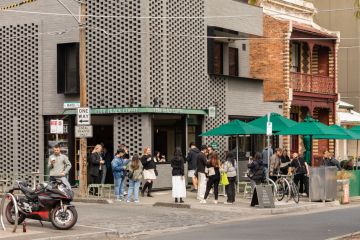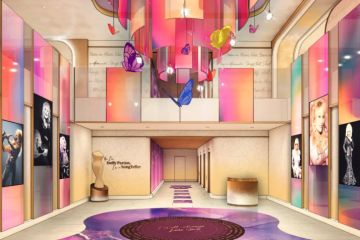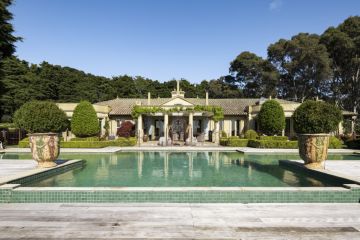Why grey is the new white

Dull. Dreary. Drab. The colour grey has been accused of many things, not all of them flattering, but this quiet achiever is smashing stereotypes and establishing itself as the go-to shade in today’s interiors.
Sonia Warner, of Sydney interior design company Woods and Warner, says greys have replaced the warm whites that dominated interiors in the 1990s.
“Stronger whites are still being used but grey is coming in as more of a softer foundation,” Warner says.
“It’s been creeping in for the past few years but it’s now very popular, especially with the Nordic influences coming through.”
As well as pointing to the rise of Scandi-chic, Warner traces the trend to Australians’ greater awareness of architecture and design.
Grey concrete became commercially popular in the 1930s and has been embraced by the architectural world ever since. The lust for strong, angular forms using industrial-style materials has spread from architecture buffs to the general public – and with it, Warner says, an appreciation of different shades of grey.
 Thanks to Nordic influences, grey is becoming a more popular choice. Photo: Dulux
Thanks to Nordic influences, grey is becoming a more popular choice. Photo: Dulux
“At Woods and Warner, our advice is to embrace grey to bring a sense of sophistication to a scheme by painting all the walls within a space one shade of grey.”
For a Hamptons-inspired look, she recommends teaming pale warm grey walls with warm white timber trims, charcoal ceramic crackle-finished wall tiles and Carrara marble.
“Or try mixing greys with nude tones, petrol greens, black metal details and grey-washed wide timber floorboards for a Nordic-inspired scheme.”
Grey can also be used with acid greens or yellows for an edgy, modern look.
American colour expert Maria Killam says grey is on trend because it provides a crisp backdrop to the bold, colourful hues that are popular today.
“Those happy colours need grey as a backdrop because the beiges we were using as part of the brown trend generally die when combined with clean colours,” Killam writes on her blog.
 Trust grey to bring a sense of sophistication to a room. Photo: Dulux
Trust grey to bring a sense of sophistication to a room. Photo: Dulux
While pale beiges can work with colours, Killam says darker shades of beige end up looking dirty.
“The real scoop is that we’re currently in the middle of a 10-year neutral trend cycle with grey. Before grey, we were all about brown, and before that, maybe you remember sage green. Many of us can even recall the forest green trend of the ’80s.”
Sydney stylist and co-founder of The Decorating School Emma Blomfield says grey is best used as a layering colour, rather than a statement in itself.
She prefers to use greys together with crisp, almost clinical whites and cool colours such as blues or greens.
In homes with a lot of beige tones, she suggests updating the look by introducing warmer “donkey” greys – in a new sofa or curtains, for example.
“I don’t see grey going anywhere any time soon,” Blomfield says. “You can layer the intensity of the tone, working with charcoals and blacks. And it works really well with metallics like burnished silvers and stainless steel. I’m sitting in an office at the moment and everything is grey but it just works.”
 According to experts, grey is here to stay. Photo: Dulux
According to experts, grey is here to stay. Photo: Dulux
We recommend
We thought you might like
States
Capital Cities
Capital Cities - Rentals
Popular Areas
Allhomes
More







